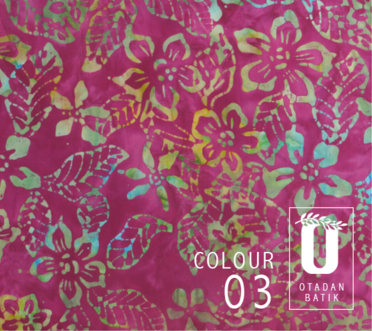Afghan women continue to wear symbolic burqa
People’s Daily Online, China
The burqa is “in.” Actually the all-enveloping cloak has never really been “out” in the five years since the fall of the ultra-Islamic Taliban regime that forced all women to wear it.
But in today’s conflict-ridden Afghanistan, the garment seen by many as a symbol of oppression is finding new followers among Western women worried about anti-foreigner sentiment, and Western men looking for ironic gifts for lovers back home.
The growing number of women beggars and prostitutes on the streets of the capital are also choosing to hide their supposed shame beneath its all-covering folds.
And there are more and more cases of male insurgents caught using burqas to conceal themselves and their weapons with security guard searches under the voluminous veil a no-no even in these troubled times.
For most Afghan women the burqa is still a widespread item that can be a security blanket, protection against the pervasive dust, a shield for a breastfeeding baby, or a nifty cover for a nip down to the shops without make-up.
In his burqa “boutique” in Kabul’s main bazaar, Waheedullah Najimi admits sales have roughly halved since the Taliban were forced out of government in 2001.
But he still sells about 20 a day, the shopkeeper says in his small store lined top to bottom with burqas of different colours, sizes and quality.
Most Kabul girls choose grey-blue, while in northern Mazar-i-Sharif white is also popular. Light blue is worn in some provinces, and green is used in Kandahar and Khost, Najimi says.
Among the demure colours are one or two splashes of pink and red these are for foreigners looking for gifts, he says. As are the pint-size replicas, just right to cover a wine bottle, that sell for one dollar a pop.
As with any fashion item, the quality depends on the buyer’s budget.
A burqa in cheap, rough material delivered in rolls from Pakistan can cost a little as US$4 dollars. One in a soft fabric with careful embroidery in the front can sell for seven times as much.
One of Najimi’s customers today is wizened 60-year-old Sufi Qayoom, who has come to buy new two burqas for his dying wife.
The burqas will be given to the women whose body will be washed before her burial. “If she doesn’t have new clothes, maybe no one will wash her,” Qayoom says.
Sixteen-year-old Hangama wants a new burqa for after her wedding in a few weeks. She has hooked the hip-length front of the garment over the back of her head as many women do when they need to see better while she browses.
“It is difficult to wear, it is hard to breathe… but it is good because men cannot see me, nobody can see any part of your body,” she says.
“If we don’t wear the burqa, we feel like we are naked,” says 32-year-old Malalalai, who came in a bit later.
Nineteen-year-old Najia is in the store to deliver 12 burqas into which she and her sisters have painstakingly pressed hundreds of narrow pleats.
Every week the family collects drops of material that they pleat with a hot iron and water, a process they say is hard on their hands but earns around US$2 for each one.
They return the garments to the store for other women to pick up and attach the fitted skullcaps and lace grilles.
“I feel safe when I wear it,” Najia says before heading out into the bright afternoon with her escort, her brother of about 10. “I can’t see everybody or everywhere, but no one can see me,” she says, her face hidden.
Safety cloak
Most Afghan women say safety is the biggest benefit of the burqa, which was also common during the civil war that preceded the 1996 rise of power of the Taliban.
That is also why today some Western aid workers and journalists have one hanging in their closet.
A journalist whose home was in the thick of deadly May 29 riots that engulfed the capital threw one on and escaped on the back of a bicycle as angry crowds milled around following a deadly traffic accident involving a US vehicle.
“The burqa was the safest way to travel through the city during the riots. A number of Western women put them on to get unseen from house to house,” she says.
It also helps to hide one’s identity when travelling through the dangerous south where foreigners are targets of Taliban militants.
An aid worker who also has one says it is for emergencies only, although the garment rubs her the wrong way.
“They erode all sense of identity and are about as demeaning as clothing can get. On a practical level, they are also dangerous in that one’s scope of vision is so impaired,” she says.
Afghanistan’s educated women were the first to drop the burqa when the Taliban were forced out and they too detest the garment but recognize that for many the time is not right to hang it up.
“Security in Afghanistan is still a problem. Day by day it is getting worse. And the wearing of the burqa is still related directly to security,” says former women’s minister Masooda Jalal.
“For more women to stop wearing the burqa, we need to have full security and need to educate families in rural areas,” she says, referring to deeply conservative regions where men believe women should be completely covered.
Popular gift
Despite being such an overt sign of women’s oppression, the burqa is not the biggest women’s rights issue in Afghanistan, says legislator Shukria Barakzai.
Women in this conservative country have difficult lives: most are illiterate and poor, the maternal mortality rate is among the highest in the world, child and forced marriages are common, and women generally live as men tell them to.
As a symbol closely associated with Afghanistan, it is perhaps inevitable that the garment has become visitors’ choice for a gift for people back home that is sometimes meant as a joke but also gives insight into what is an outrageous concept in the West.
One said he brought one for his girlfriend in Britain to pretend to “admonish her for having too good a time while I was away in Afghanistan.”
“It was supposed to annoy her, to make her mad at me, after which I would give her a real gift, and win her over. Funny thing is, she wasn’t at all annoyed with the burqa. She immediately tried it on and was shocked at how difficult it is to breathe and see through,” he said.
And while the burqa may not be the new black, it has made it onto the catwalk, causing a stir at Afghanistan’s first fashion show held last month. The white silk and embroidered piece was intended to acknowledge an item so integral to Afghan fashion and give it a more positive look, says designer Zolaykha Sherzad, from the design house that put on the show.
Source: China Daily





